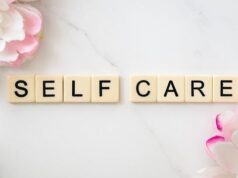In the intricate dance of relationships, few phrases are as dreaded as “it’s not you, it’s me.” This seemingly gentle exit line can feel like a swift kick to the heart, leaving many wondering how to respond in the moment. Navigating this delicate situation requires a balance of emotional intelligence and clarity, as it opens the door to deeper communication and understanding. Whether you’re facing a breakup or simply grappling with a partner’s need for space, your response can set the tone for healing and future connections. In this article, we will explore thoughtful ways to reply when confronted with this ambiguous phrase, transforming a painful moment into an opportunity for growth and self-reflection.
Understanding the Phrase and Its Implications
When someone says, “It’s not you, it’s me,” they often imply a multitude of unexpressed emotions and thoughts. At first glance, this phrase might seem like a polite way to end a relationship, but delving deeper reveals underlying complexities. The implication here suggests that the speaker is facing personal issues that have nothing to do with the recipient. It conveys a certain sense of reluctance and vulnerability, indicating that the decision stems from self-reflection rather than a direct critique or deficiency in the other person. This can evoke feelings of confusion, as it raises questions about the true nature of the issues at play.
Understanding this phrase involves recognizing its potential effects on both parties. For the person receiving this message, it may come across as a gentle dismissal, leaving room for self-doubt or introspection. Key aspects to consider include:
- Personal accountability: The speaker takes responsibility for the breakup, which might help lessen guilt on the part of the listener.
- Emotional safety: It provides a shield against potential hurt, allowing the speaker to exit a situation without detailing specific grievances.
- Encouragement for growth: For some, this statement can act as a catalyst for personal development, prompting reflection on what they seek in relationships.
Recognizing these subtleties can help individuals respond more thoughtfully, promoting a healthier closure between both parties.
Recognizing Your Emotional Response
When faced with the phrase “it’s not you, it’s me,” it’s essential to pause and reflect on your emotional response. This statement often acts as a shield, allowing the speaker to deflect the discomfort of criticism or rejection. In recognizing your feelings, consider the underlying emotions at play—confusion, sadness, or perhaps relief. By dissecting your initial reaction, you can gain insight into your thoughts and feelings, which may include:
- Surprise: A sudden revelation that leaves you unsure of how to respond.
- Insecurity: Doubts creeping in about your self-worth and relationships.
- Curiosity: A desire to understand the true reasons behind the breakup.
Once you acknowledge these emotions, it becomes easier to address them constructively. Emphasize self-compassion and give yourself permission to feel whatever comes up. Check in with yourself about what you need at this moment—perhaps you need to talk about your feelings with a trusted friend or seek solace in a favorite hobby. Embracing this process will not only help you navigate your emotional landscape but also empower you to engage in future relationships with greater clarity and confidence. Reflect on what this experience teaches you and how it shapes your understanding of love and connection.
- Empowerment: Recognizing your feelings can lead to personal growth.
- Self-Discovery: Each experience can reveal more about your emotional needs.
- Healing: Allowing yourself to feel paves the way for emotional recovery.
Evaluating the Relationship Dynamics
When faced with the phrase “it’s not you, it’s me,” it’s essential to take a moment to reflect on the relationship dynamics at play. This expression often acts as a shield, allowing one partner to deflect responsibility while indicating their internal struggles. It’s crucial to consider the context of this statement and explore potential underlying issues, such as:
- Fear of intimacy or commitment
- Personal challenges unrelated to the relationship
- Previous experiences influencing current behavior
Understanding these dynamics can shed light on the reasons behind the breakup and provide clarity moving forward. It’s also vital to assess your own feelings and needs in the relationship. Ask yourself whether the relationship aligned with your expectations and emotional health. Consider the following questions to guide your evaluation:
- Were there recurring patterns or conflicts in the relationship?
- Did you feel valued and heard by your partner?
- Are there lessons you can learn for future relationships?
Accepting the Truth Behind the Words
When faced with the statement “it’s not you, it’s me,” it’s essential to peel back the layers of this common but often misunderstood phrase. At its core, this expression serves as a veil that can mask deeper feelings of vulnerability or self-reflection on the part of the speaker. Accepting this truth requires embracing the possibility that the breakup or distance stems not directly from any fault on your part but from the other person’s internal struggles and emotional landscape. Consider exploring the following aspects:
- Reflection: Understand that personal growth and emotional readiness can shift relationships.
- Empathy: Acknowledge the speaker’s courage in confronting their feelings and the weight of their honesty.
- Self-Compassion: Allow yourself to process your emotions without self-blame, recognizing that everyone seeks personal clarity in love.
While this phrase often serves as an exit strategy, it also invites introspection about your relationship dynamics. Responding thoughtfully can alleviate sting and provide closure. Instead of reacting with anger or disbelief, engage in a constructive dialog, allowing for shared understanding and respect. This approach emphasizes the importance of:
- Open Communication: Encourage a conversation about feelings, fostering a safe space for both parties to share.
- Personal Growth: Use this moment as an opportunity to identify your own needs and desires moving forward.
- Acceptance: Embrace the situation as a chance to evolve, knowing that every end opens the door to new beginnings.
Finding Closure in Vulnerability
When faced with a declaration of “it’s not you, it’s me,” it’s essential to embrace the discomfort that comes with vulnerability. This phrase often signals personal insufficiencies or misalignments rather than failings of the other person. Finding closure in these moments involves introspection and recognizing that everyone has their unique struggles. It is an opportunity to reflect on your own experiences and to acknowledge that relationships can be complicated. Consider the following as steps to navigate through this emotion:
- Self-Reflection: Assess your own feelings and reactions.
- Empathy: Understand the other person’s perspective and challenges.
- Honesty: Be truthful with yourself about the relationship’s dynamics.
While it’s natural to feel rejected or hurt, allowing vulnerability to be a part of the healing process can lead to growth. Embracing this openness paves the way for learning about oneself and what is truly important in future relationships. Many people find that through this understanding, they can cultivate stronger connections moving forward. Remember that every ending has the potential for new beginnings, and the lessons learned can significantly enrich future encounters.
Communicating Your Feelings Openly
When faced with the phrase “it’s not you, it’s me,” it can feel like a brick wall has suddenly appeared in the conversation. However, this moment provides an opportunity to communicate your feelings openly and honestly. Acknowledge your emotions and express how the situation has impacted you. It’s essential to avoid defensiveness and instead focus on articulating your perspective. Consider sharing your feelings by using “I” statements that emphasize your experience without sounding accusatory, such as:
- I feel confused about where we stand.
- I sense a disconnect, and it worries me.
- I need clarity to understand what this means for us.
Engaging in an open dialog can help bridge the emotional gap created by this statement. Invite your partner to share their thoughts and feelings as well, demonstrating that you value their perspective. This exchange can foster a deeper understanding of each other’s emotional needs and pave the way for healing or closure. To create a safe environment for discussion, consider bringing up the following points:
- What are your current feelings about our relationship?
- Are there specific aspects you believe need change?
- How can we both move forward positively, regardless of the outcome?
Looking for Lessons Learned
When faced with the phrase, “it’s not you, it’s me,” it can feel like a sudden jolt, prompting you to reflect on the relationship and the lessons that arise from it. To navigate this moment effectively, consider embracing these insights:
- Self-Reflection: Take time to assess your feelings and expectations. Understanding what you truly want from a relationship can provide clarity for future interactions.
- Open Communication: Seek to express your thoughts and feelings honestly. Constructive dialog can foster deeper connections and prevent misunderstandings.
Moreover, recognizing that this statement often stems from personal struggles of the other individual can lead to valuable lessons. It highlights the importance of emotional well-being in relationships. As you process this experience, keep in mind:
- Empathy: Be compassionate towards the other person’s journey. Their struggles may have influenced their actions, offering you a broader perspective on your own relational experiences.
- Growth Mindset: View this as a chance for growth. Each relationship provides unique lessons that can inform and improve your future connections.
Exploring the Impact on Self-Esteem
When faced with the phrase “it’s not you, it’s me,” it can be a significant blow to one’s self-esteem. This expression often implies a withdrawal from a relationship or commitment, leading us to reflect on our worth and desirability. In the aftermath, individuals may experience a surge of negative self-perception, questioning their attractiveness or value. To navigate these tumultuous feelings, it can be helpful to engage in positive self-talk and recognize the inherent worth each of us possesses. Understand that such statements are frequently more about the other person’s struggles than about any deficiency in ourselves.
Furthermore, it is crucial to adopt strategies that foster resilience and reinforce self-esteem after experiencing such relationship-related upheaval. Engaging in activities that promote self-compassion and personal growth can be beneficial, such as:
- Identifying and challenging negative thoughts.
- Focusing on strengths and past achievements.
- Surrounding oneself with supportive friends and family members.
- Pursuing hobbies or interests that spark joy and fulfillment.
By consciously choosing to build a robust sense of self, individuals can rise above the fleeting negativity associated with relationship endings and emerge stronger, with a clearer understanding of their capabilities and value.
Navigating the Path to Healing
When faced with the phrase “it’s not you, it’s me,” emotions can surge, leaving you grappling with confusion and hurt. Understanding that this statement often reflects the speaker’s internal struggles rather than a deficiency on your part is crucial. Take a moment to reflect on what this admission signifies for both of you. Acknowledging feelings is vital, so consider expressing your emotions honestly but calmly. It may be helpful to share that you recognize the sentiment is not a commentary on your worth, but rather an insight into the speaker’s perspective. This can pave the way for a more meaningful conversation.
To move forward positively, focus on your healing journey. Setting boundaries can protect your emotional well-being, allowing you to process your feelings in a constructive manner. Here are a few strategies to consider:
- Self-reflection: Take time to understand your own feelings about the relationship and what you desire moving forward.
- Open dialog: If appropriate, initiate a conversation about both parties’ needs and feelings.
- Support network: Lean on friends and family to help you navigate this emotional landscape.
Incorporating these steps will not only foster personal growth but also aid in understanding the nuances of relationships and their complexities.
Open Windows: Opportunities for Growth
In relationships, just as in a room, proper ventilation is crucial. Opening windows can create openings for opportunities, allowing fresh air to circulate and bring in new perspectives. The act of expressing that “it’s not you, it’s me” can be likened to letting in fresh air—a way to clarify feelings without placing blame. Just as a room can become stale and suffocating if left closed off, a conversation that lacks transparency might lead to misunderstandings. By stepping back and reassessing the dynamics at play, both partners can breathe easier and regain clarity.
However, while fresh air is invigorating, it’s important to recognize the potential downsides. In the heat of emotional discussions, an open window can also invite in unwanted distractions or misinterpretations, akin to how humidity can lead to mold in a poorly ventilated room. To ensure a constructive dialog, consider these strategies:
– Stay focused on your feelings.
– Listen actively and avoid interruptions.
– Maintain a respectful tone, regardless of the topic.
Successfully navigating the nuances of this delicate conversation can pave the way for growth, leaving both partners feeling validated and understood.
Moving Forward with Confidence and Clarity
Understanding that a relationship ending is often more about the other person’s internal struggles than a reflection of your worth can be liberating. As you process the phrase “it’s not you, it’s me,” it’s essential to take a moment and reflect on your feelings. Acknowledge the pain and confusion, but also embrace the opportunity for growth and self-discovery. Moving forward with confidence means recognizing your value and the lessons learned from this experience. You can use this time to cultivate your interests and passions, reinforcing your sense of identity outside of the relationship.
As you navigate this transition, consider the following steps to maintain clarity and focus:
- Engage in self-care: Prioritize your mental and emotional health through activities that bring you joy.
- Reflect on the relationship: Identify what you want in future connections and what you’ve learned about yourself.
- Surround yourself with support: Lean on friends and family who uplift and encourage you during this time.
- Set new personal goals: Channel your energy into personal development, whether it’s pursuing a hobby or advancing your career.
Embrace this newfound clarity to shape your future positively, knowing that every ending also holds the potential for a new beginning.
In Summary
In the realm of relationships, hearing the phrase “it’s not you, it’s me” can evoke a whirlwind of emotions. As we’ve explored, responding to this statement requires a blend of empathy, understanding, and self-reflection. Remember, this moment is not just an ending but an opportunity for growth. By responding thoughtfully, you can navigate the complexities of such conversations with grace. Ultimately, every ending paves the way for new beginnings, and how you choose to react can shape your journey forward. Embrace the lessons learned and carry them with you as you step into the next chapter of your life, equipped with newfound clarity and resilience.




